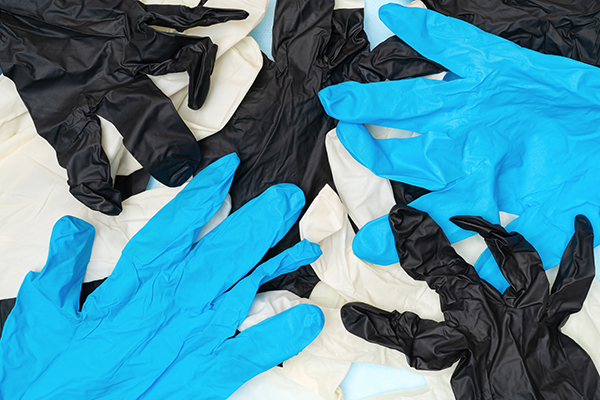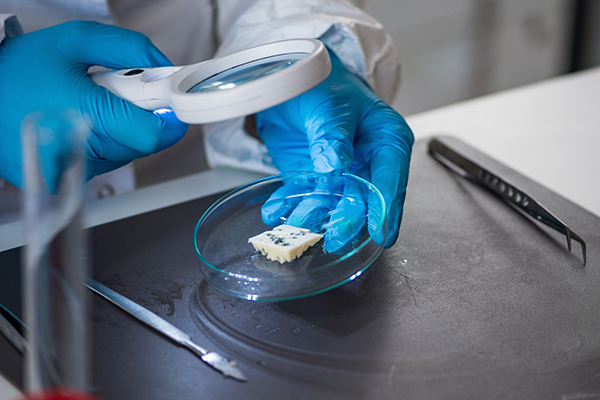Was that last 24 Hour “Bug” You Had Really a Foodborne Illness in Disguise?
Within this blog, I have discussed many foodborne pathogens: E. coli, Hepatitis, Salmonella, Listeria monocytogenes, and Campylobacter. But we’ve somehow managed to omit Staphylococcus aureus (S. aureus).
It isn’t that it is any less important than the others we have discussed. S. aureus causes a wide variety of infections, from skin infections to diseases that can be potentially fatal. And while it isn’t among the top foodborne illnesses in the United States, estimates indicate that S. aureus causes just less than 250,000 illnesses in the United States each year. It should be noted through, that these incidences may be much higher than estimated due to non-reports of the illness.
S. aureus can grow in a wide range of temperatures, from 44°F to 119°F and while most pathogens thrive in moist environments, S. aureus has the ability to survive dry and otherwise stressful instruments, such as the human nose and skin, and even on clothing and other surfaces.
The formation of these toxins is one reason why cooking the food will be of no use in protecting yourself or your guests.
Symptoms of S. aureus include nausea, vomiting, stomach cramps, and in most cases, diarrhea. Symptoms can begin as little as 30 minutes after consuming a food or beverage item contaminated with S. aureus but can sometimes take as long as 8 hours to manifest in symptoms. These symptoms usually last for no longer than 24 hours and rarely result in severe illness.
Does this sound like the last “24-hour” bug you or your children may have had? This is one of the reasons why it is believed that the incidence of S. aureus is much higher than estimated, most simply do not visit a medical professional who can diagnose S. aureus.
The reason why S. aureus can make someone ill so quickly is because of the nature of the bacteria. In the case of an S. aureus illness, the bacteria may have multiplied on the food since the time the food came into contact with the host food item. These bacteria then leave behind a toxin on the food, which is what causes the illness. For example, think of a food that might have a cleaning chemical on it – it would make you sick very quickly after ingesting the item.
The formation of these toxins is one reason why cooking the food will be of no use in protecting yourself or your guests. Yes, cooking the product will eliminate the S. aureus bacteria, but it does not eliminate the toxin that the bacteria left behind.
Food items commonly implicated in S. aureus illnesses include milk and cheeses, but other food products that have been implicated in such illnesses include cold salads, sliced deli meats, sandwiches, cream-filled pastries, and puddings.
S. aureus is just one of the reasons why it is important to pay attention to safe food handling throughout the entire life of a product. Avoiding cross contamination, ensuring proper personal hygiene (unlike the sushi chef picture we used for the blogs – did you notice they were not wearing gloves?), and storing food at proper temperatures are key steps in protecting your operation from a S. aureus outbreak (and almost all other foodborne illnesses). Risk Nothing.
READ MORE POSTS
Handwashing: The Habit that Isn’t as Common as We May Think
Earlier this year, I started to focus our FoodHandler Food Safety blogs on common food safety issues faced in each foodservice operation across the world. We’ve covered some of the most common issues, but perhaps none is more common than improper hand hygiene.
Is Implementing a Color-Coded Food Safety Plan Right for your Operation?
Foodborne pathogens are by far the most prevalent cause of foodborne illness in the United States and across the world. There are 31 known agents that cause foodborne illnesses, and more that are unspecified or yet undiscovered – remember, E. Coli 0157:H7 wasn’t identified until the early-1980s. It is estimated each year, 48 million illnesses occur because of these known and unknown pathogens, resulting in over 3,000 deaths.
Maintaining your Equipment: Is it the Missing Ingredient in your Recipe for Food Safety?
Although I am no longer in day-to-day operations, between our students and foodservice lab at the university and my volunteer activities in my local church, I keep a close hand in food production. This past week, I had the opportunity to lead a group of men at our church in preparation of a luncheon for 100 women who were attending a spirituality retreat. Over the course of the morning, I realized our main cooler in the kitchen was not functioning properly and was about 10˚F above the required temperature. While we do have a commercial kitchen, we do not routinely log temperatures, so when the unit started to malfunction is questionable. Even more concerning was not the lunch we were preparing for, but the dinner that was served the night before for 300+ families in the parish.
Contamination of Food: Let’s Get Physical
Earlier this month, we began a discussion about contamination of food. Our first blog focused on chemical contamination, but in this blog, I’d like to look at physical contamination of food.










